No products in the cart.
Table of Contents
In the Philodendron species, there are no other plants that resemble the beauty of the Prince of Orange. The tropical dweller is exotic and a hybrid you do not find anywhere in a natural environment. But, with one in your home, it is a showstopper, and we are going to help you care for it to keep it thriving as an eye-cathing indoor plant.
What is Philodendron Prince of Orange?
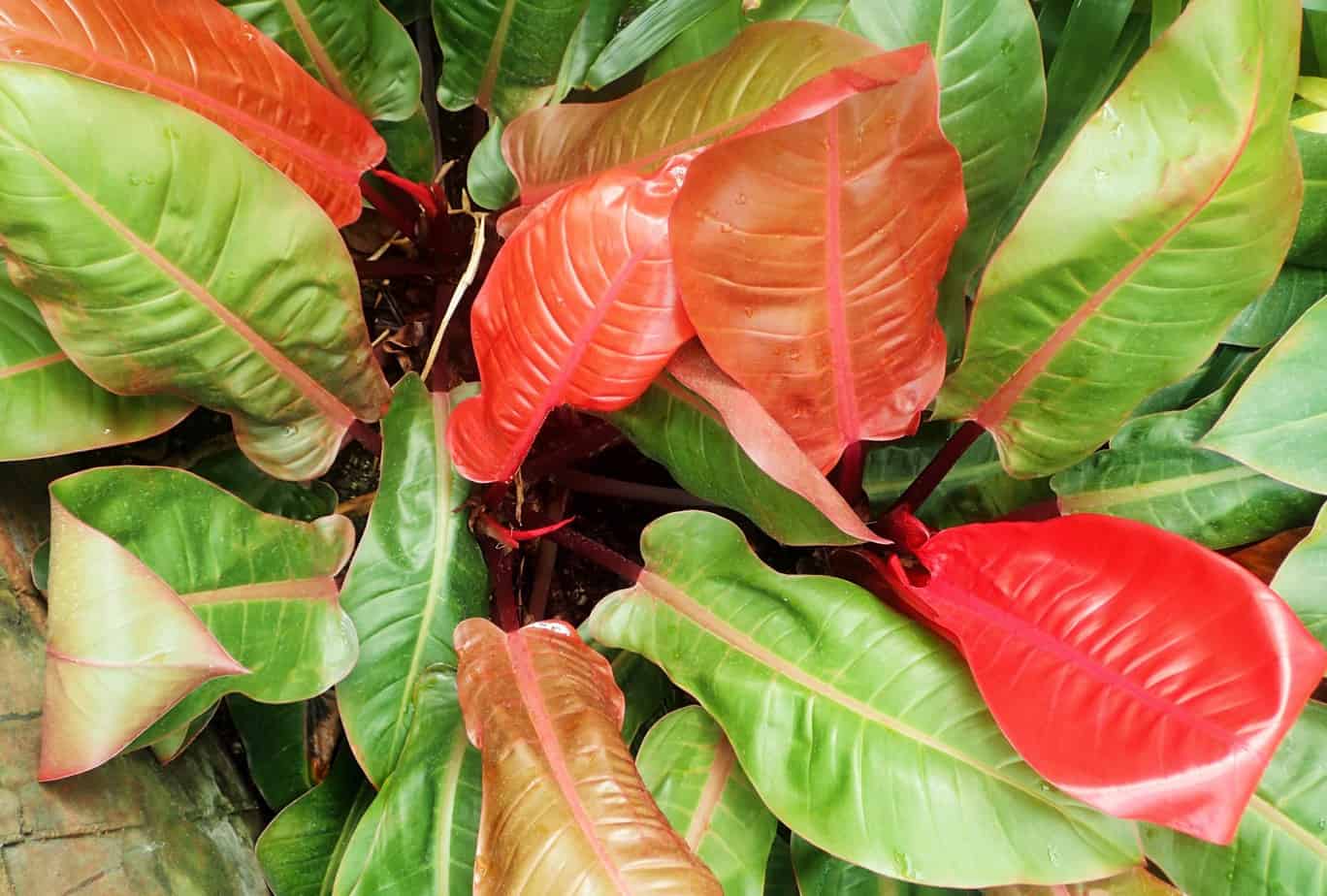
The Philodendron Prince of Orange is a magnificent species with deep orange-bronze leaves that turn salmon as it grows. As time lapses, the leaves become a golden hue. Once fully developed, it turns light green, turning dark green with age.
When all the colors come together in the plant, it displays a dazzling color. Another difference compared to other Philodendron plants is this one is self-heading. The petioles group together without the stem visible.
It makes for an ideal indoor plant for ornamental display in a pot for a long time as the stem remains short. When small, you can place it on a tabletop, but it needs a bigger spot to rise as it grows.
Philodendron Prince of Orange Care
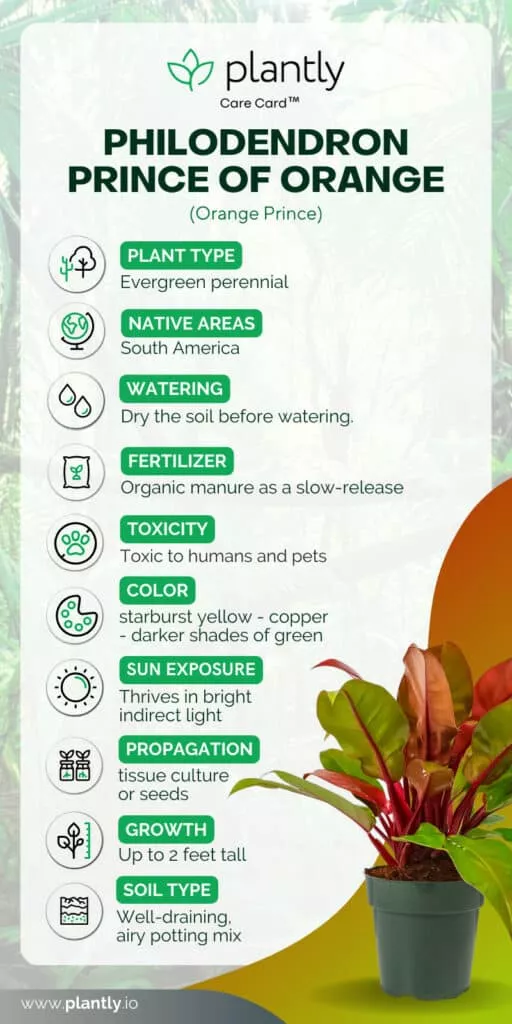
For the best living conditions for your Prince of Orange, it helps to create a tropical environment for them to live in. Your houseplant needs TLC, warmth, humidity, light, and moisture loads. The essential thing is to provide your plant with a pot with enough drainage holes and soil rich in organic matter.
Potting Mix for Your Tropical Plant
Growing the Orange Philodendron in a planter or pot requires a rich yet airy potting mix that drains well and filled with organic matter to provide the roots with nutrients.
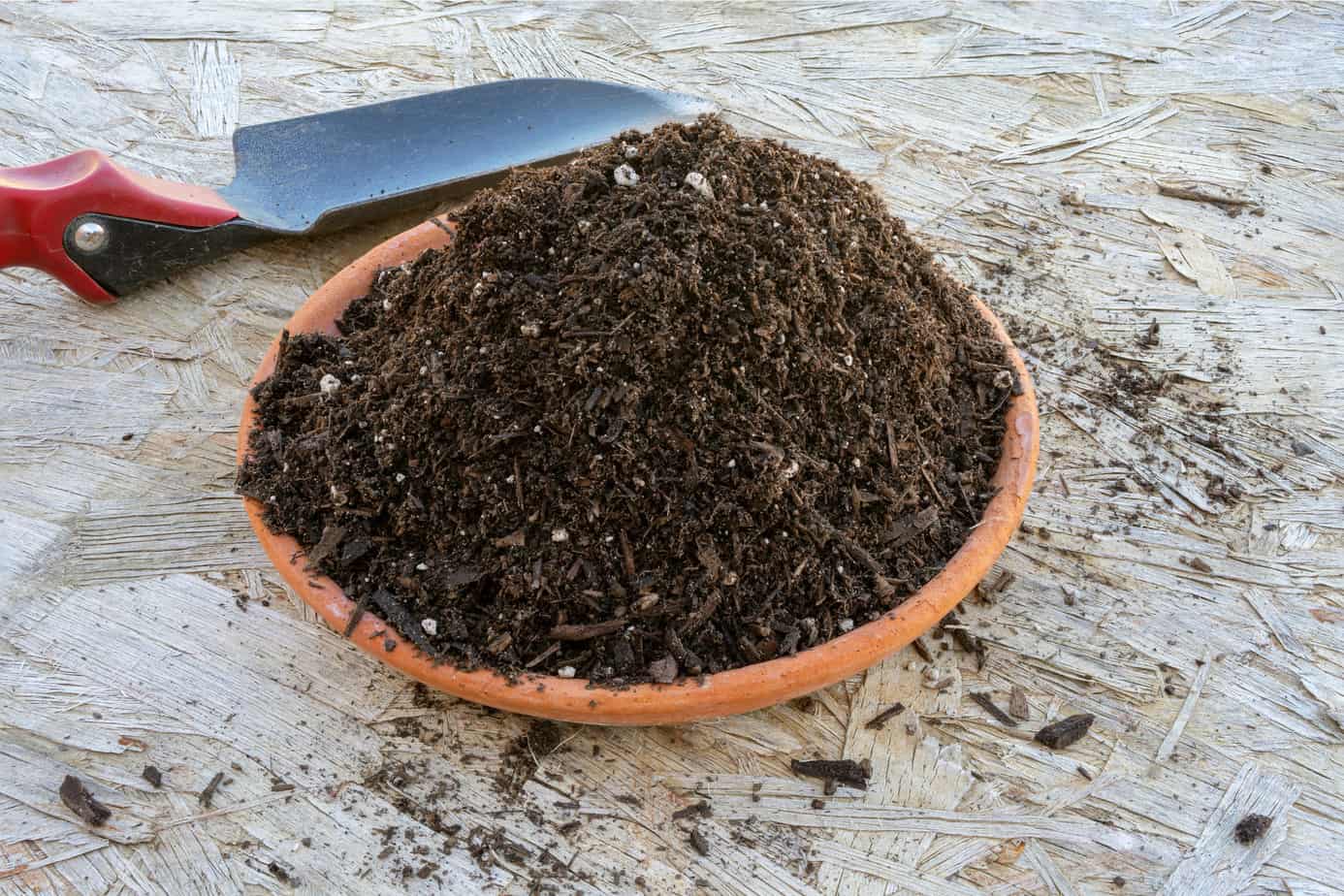
It needs a limited amount of soil and is more there to provide stability for the plant. Hence, we do not recommend clay soils. Instead, use sand supplemented with 50% of organic substrates like coconut husk, peat moss, organic manure, leaf mulch, and more.
The chunky bits make the soil airy or invest in an excellent succulent mix like organic manure and peat.
Lighting Condition for Tropical Plants
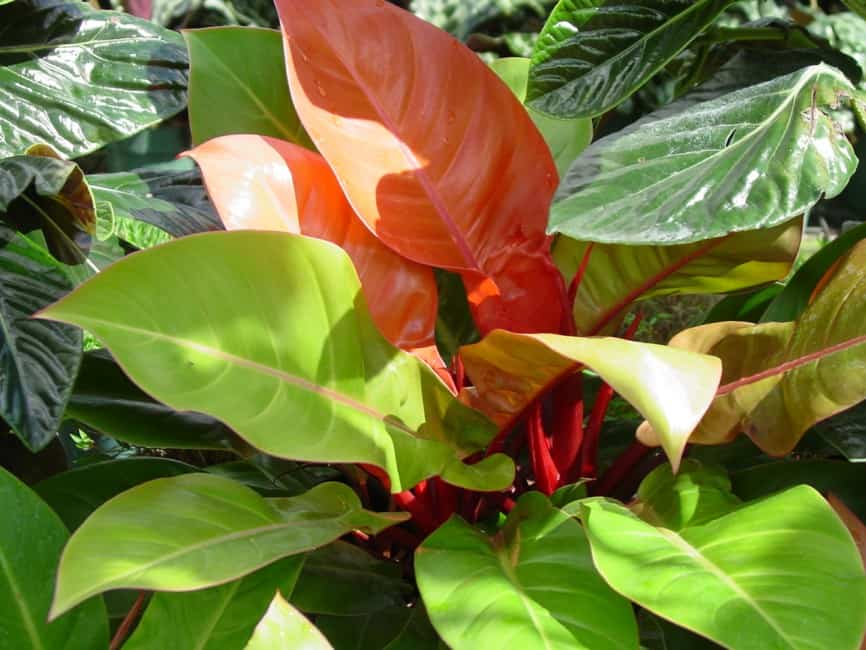
Many gardeners say that the Philodendron Prince is an excellent shade plant. Still, in our experience, it needs up to 80% sunlight to grow those gorgeous colors to pop.
Providing your outdoor plant with direct sunlight in the morning and afternoon for half an hour provides a spectacular color display.
For the rest of the day, your plant can thrive in indirect light to bright shade as late direct sun is a big NO-NO.
You can grow your houseplant in the shade, but the foliage will not display that dramatic colors. Another thing is your plant grows fast placed in semi-bright filtered light.
If you live in a cold climate zone, the Prince of Orange plants prefers indoor growing.
Watering Need to Prevent Root Rot
Most people fail when caring for the Philodendron Prince Orange plant. Yet, your plant will love you if you provide it with moist soil instead of drying it out between watering. Still, your watering schedule will differ depending on the environment it grows.
The important thing is to provide your plant with bright light and well-draining soil to prevent root rot. You can leave the topsoil to dry up to two inches and water deeply. You can do this during spring, and as fall arrives, you can reduce the water.
Also, try not to give your plant cold water and best left to stand at room temperature to prevent shock to your plant.
Temperature and Humidity Level
Your Philodendron plants need a lot of warmth and grow well in tropical weather zones. The best temperature to keep those deep green and bright colors are between 65 – 80°F (18 – 27°C).

If you find it too warm, you can place your orange prince in some dappled light. Likewise, you can grow your Philodendron Prince Orange in warm room temperatures if you live in a cold climate.
Still, the room temperature needs to remain above 55°F (13°C). So the best advice we can give you is to keep your plant indoors in a heated room during winter. It survives reasonably easily in a heated room.
It needs to be kept indoors always in winters. The orange prince always welcomes humidity and loves a cool-mist room humidifier to stay clean and fresh. Still, give the plant’s leaves a gentle wipe down to dry the leaves to prevent a buildup of diseases or mold.
For healthy growth, keep the humidity at 50% or higher.
Fertilizing Philodendron Prince of Orange
The Prince of Orange grows well in organic manure as a slow-release fertilizer. But if you want to give some extra plant food, it helps take some precautions.
As your plant is a light feeder, you can feed it bi-monthly with a balanced fertilizer diluted like the 10-10-10 to prevent a salt buildup. Or you can provide your Philodendron genus with fish emulsion.
You can apply it once every two weeks with excellent results.
How to Propagate your Prince of Orange
Okay, plant lovers, these Philodendron varieties are complicated to propagate but not impossible. Most professional growers reproduce this self-heading plant through tissue culture or seeds. But you can do the following steps in springtime with high humidity levels for success.
Prince of Orange Plantlets
Look for small plantlets around the base on the exposed stem on the mother plant.
Leave the plantlets to grow until it has a few leaves and nodes visible and can take up to a month.
Select one with aerial roots, and when long enough, cut one off the mature plant and pot it in solid and care for it.
Air-Layering
Take a six-inch zip log bag and punch a few holes at the bottom.
Soak some sphagnum moss and place a handful inside the bag.
Make some slits at the top of the bag to create wings.
At the base of the plantlet, look for aerial root bumps.
Take a sterilized sharp knife and make a slit underneath the node where you want it to root.
Next, hold the wet moss in your bag against the stem cuttings, wrap the wings with your other hand around the stem, and secure it with some twisty ties.
Place your plant in bright indirect light and keep the moss moist until new roots grow through it.
Remove your bag and take a sterile pair of scissors to separate your plantlet with its new roots.
Pot the plantlet and, at first, grow it in some shade until established.
You only need to repot your Orange Philodendron when the roots fill the container, or it gets top-heavy. We recommend selecting a terracotta planter to support the weight of your plant.
Philodendron Prince of Orange Varieties
Do you love the tri-color of these orange plants, then you will treasure these varieties here:
Philodendron gloriosum
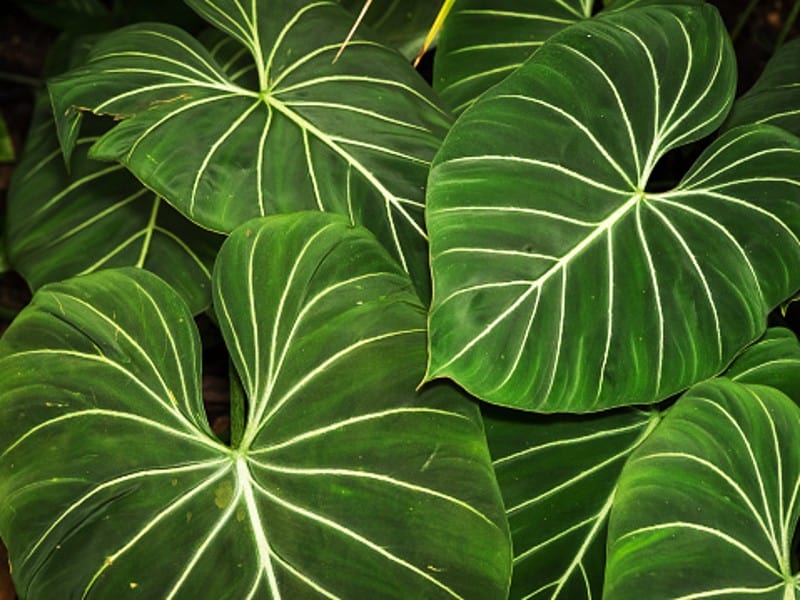
It is a stunning Philodendron plant that gives a tropical feel to any living space. The plant has huge dark green blossoming leaves enclosed with a cylindrical core stem.
Philodendron birkin
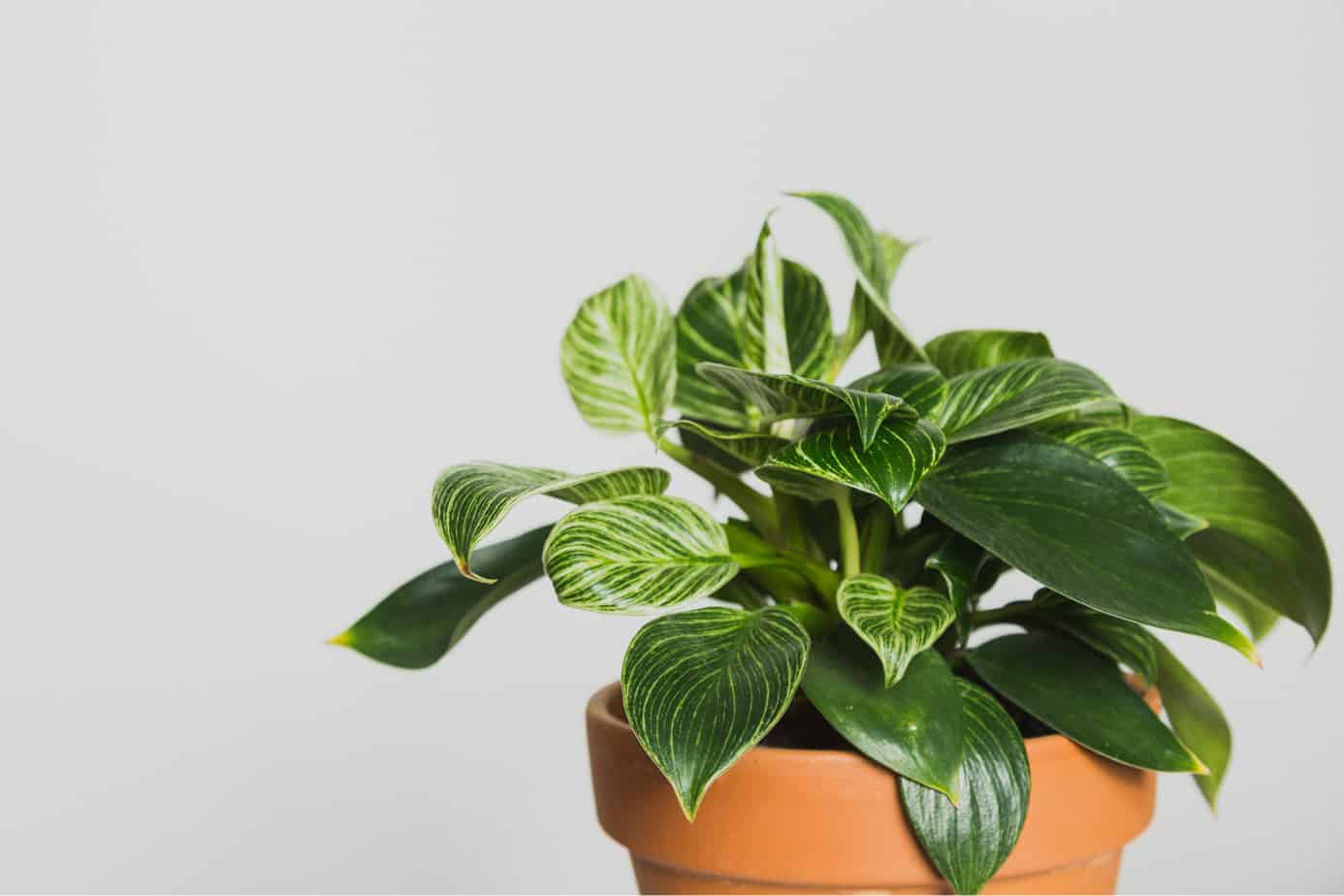
The Birkin is an excellent houseplant with oval, glossy leaves with creamy-white variegation for the plant lover. Each leave has different markings, with white pinstripes showing up once the plant matures. The plant has a lime green stem that displays well with the hue of the leaves.
Philodendron Mccolley’s Finale
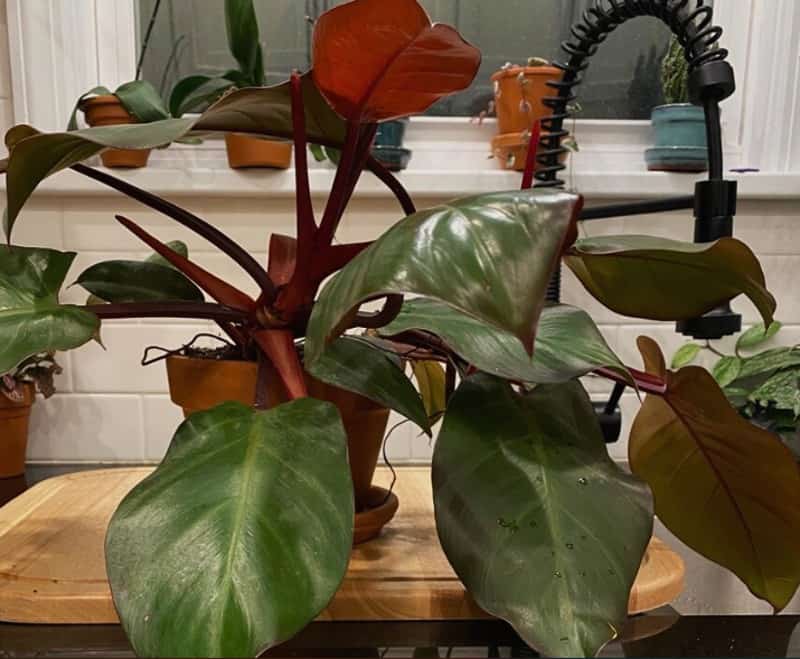
The cherry red has broad leaves with a wide-spread growth compared to the rigid growth pattern of the Philodendron Prince of Orange.
Philodendron Prince of Orange Diseases and Pests
By large, the orange plant is disease and pest resistant unless you do not provide them with tender loving care. Here are some common problems the Prince of Orange can face.
Wet Leaf Patches
If you notice water-soaked tan patches that give off a dreadful odor, then it is a bacterial infection called Erwinia blight or can be Pseudomonas leaf spot. It spreads through water droplets found on the leaf surface. First, isolate your plant, remove the infected leaves, and stop misting your plant to dry the leaves. Only water at the base of the plant.
Dark Leaf Patches
It is due to standing in cold drafts when you notice this happening. You can remove the damaged foliage and move your plant to a warmer temperature.
Yellow Leaves or Wilting
It is a sign of root rot caused by overwatering or standing in soggy soil. It can also be a fungal infection in the root system. Remove your plant to check the roots. Sadly, if it is a juvenile plant, you will not be able to save it. You can save only mature plants by salvaging the head to propagate them.
Yellow and Brown Leaf Tips
When the leaf edge has brown crispy spots, you need to water your plant more. While yellow leaves are a sign of overwatering.
Pale Foliage
Your plant has vibrant leaves, and if they look dull, it needs more light as it can tolerate shade but not flourish it int.
Familiar Pests
Common pests are aphids, mealybugs, spider mites, fungus gnats, thrips, and shore flies but rarely seen. You can use neem oil or insecticidal soap to control them with an occasional water bath.
Frequently Asked Questions
Over the past few years, the Prince of Orange has become a popular houseplant but is one of the rare plants in the Philodendron variety and a very affordable yet flashy plant.
Droopiness can result from over or underwatering your plant. The best is to check your Prince of Orange plant’s soil to see if it needs drying out or watering.
Philodendron Prince of orange doesn’t have a trailing or climbing habit like other types of philodendrons.
The good news is you can buy the Prince of Orange at your local garden center or online. Still, you need not leave the comfort of your home as Plantly has this rare plant to buy here.
Whether you want to buy, sell or simply reach out to other plant enthusiasts, Plantly is the right place to be!


